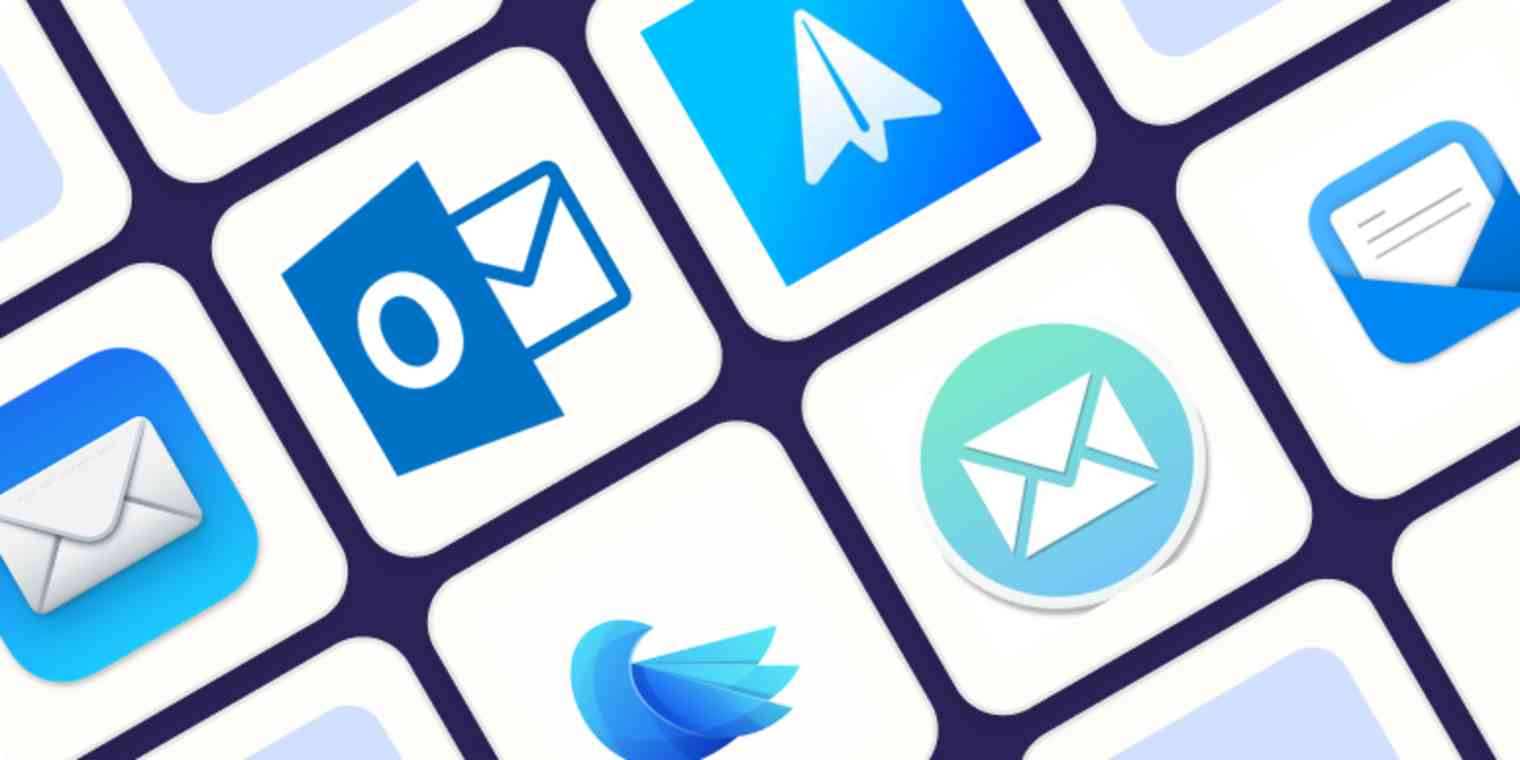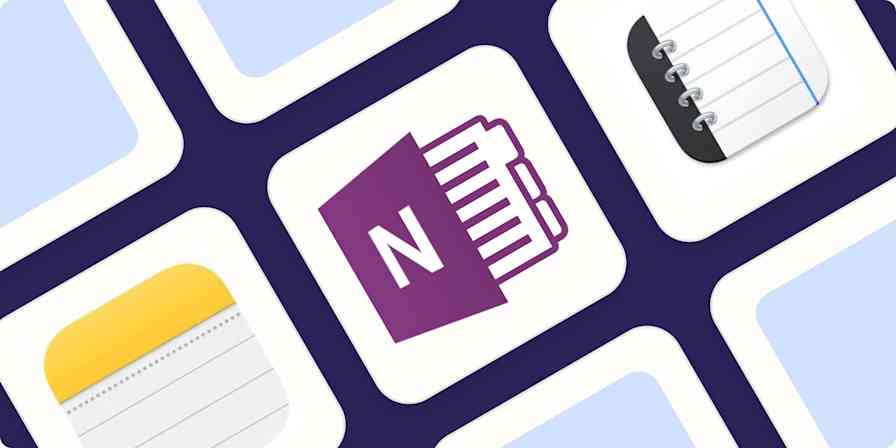Despite many attempts to kill it, email hasn't gone anywhere. But shockingly, while the basics of email haven't changed a lot over the past two decades, the email apps we use keep getting better. Once niche (and expensive) features, like scheduling an email to send later or having a message reappear in your inbox in a few days, are now almost standard, even in official web apps. It's great for users, but it means that an actual email app is more of an indulgence than a necessity.
But then, who's more indulgent than macOS users? While Gmail and Outlook's web apps are now very functional, they are still web apps. You're stuck using them through a browser with all the awkwardness that comes with it. If you want something that offers a more Mac-like experience with the familiar look, feel, and keyboard shortcuts, you need to get a dedicated email client. While no app can make reading incoming mail, browsing your inbox, sorting your messages, or replying to your boss a completely pleasant experience, a nice one can at least make it faster and easier.
As a professional tech writer, I've been trying to make email better—both for me personally and so I could have something to write about—for almost a decade. To update the list this year, I dug deep through the pool of email clients for macOS, spent time testing each contender, and landed on these six apps as the best email clients for Mac.
The 6 best email clients for Mac
Apple Mail for a great, free Mac mail app
Microsoft Outlook for people who value features over simplicity
Spark for improving your relationship with email
Canary Mail for AI and security features
Mailspring for a fast, free, and featured-filled Mac email client
Mimestream for Gmail users
What makes for the best email client for Mac?
How we evaluate and test apps
Our best apps roundups are written by humans who've spent much of their careers using, testing, and writing about software. Unless explicitly stated, we spend dozens of hours researching and testing apps, using each app as it's intended to be used and evaluating it against the criteria we set for the category. We're never paid for placement in our articles from any app or for links to any site—we value the trust readers put in us to offer authentic evaluations of the categories and apps we review. For more details on our process, read the full rundown of how we select apps to feature on the Zapier blog.
To put together this list, I reviewed dozens of Mac email clients (and skinned web apps purporting to be Mac email clients). Here's what I was looking for:
The full email experience. You need to be able to read, write, search, and sort your mail. Apps that just added Gmail notifications to your menu bar and other similar features weren't included, even if they can be useful.
Support for popular email services. Email apps should, where possible, be service-agnostic. I was looking for apps that supported major services, like Gmail and Outlook, as well as the IMAP and POP3 protocols, so you could use most other options. There's a trend of apps just supporting Gmail and Outlook, so I was a bit flexible here. Apps that only supported one service had to be truly special to make the list—not just a wrapper around a web app.
A great user experience. The Gmail and Outlook web apps are very usable, so if you're going to use an actual app, it had better be nicer—especially if you have to pay. For Mac apps, this means they have to run natively, take advantage of macOS-specific features like the menubar and notifications, and respect things like default keyboard shortcuts. This eliminated quite a few cross-platform apps that just didn't feel sufficiently Mac-like.
Advanced features and integrations. One of the advantages of having a dedicated email app is that you get access to more advanced features and integrations with other apps. While this wasn't strictly required, some kind of email automation, filtering, and customization was considered a big plus—even if it was just respecting any Gmail or Outlook rules you'd created.
Quality of life improvements. There are simple tweaks, like being able to snooze emails so they reappear in your inbox later or built-in reminders to follow up with someone you haven't replied to, that make using an email app just, well, nicer. The bar has now been set so high by built-in mail apps and web apps, that email apps really had to bring quite a few of these to the table to make the list.
I tested any mail client for Mac that seemed like it met most of these criteria. In practice, this meant logging in with one of my (all too many) email addresses and using it. In the past decade, I've picked up an absurd amount of experience with email apps, so it was often clear pretty quickly which were great options and which ones had the potential to make the email experience even worse. (Also, since this is a list of the best Mac email apps, adherence to Apple's design language and conventions was a big factor. No awkward sidebars or out-of-place menus here, please.)
Any apps that passed the initial sniff test I then used for a few days for normal email-y things. For the more advanced options, I dug through the settings and preferences and played around with things to see how they were to use. I've been updating this list for a few years now, so this was at least my third time testing every app.
No single app ticked all the boxes, at least not in the same ways. Some free apps were almost as good as the most expensive options for most things—but if you want, say, the most advanced customization options, then you'd have to pay. Which is better? That's up to you to decide.
With that in mind, here are the best Mac email apps.
The best Mac email apps at a glance
Best for | Standout features | Pricing | |
|---|---|---|---|
A great default solution | Unified mailboxes and smart mailboxes for automatic message filtering | Free | |
People who value features over simplicity | Profiles for different areas of your work and life | Free | |
Improving your relationship with email | Command Center for easy navigation and smart sorting to organize inbox | Free plan available; from $4.99/month for Premium | |
AI and security features | SecureSend for sending encrypted emails to anyone and AI Copilot for email management | Free for standard features; $49/year for Pro | |
Fast, free, and feature-filled email | Lightning-fast search and robust support for customization and automation | Free plan available; $8/month for Pro | |
Gmail users | Fully native macOS app that respects Gmail's layout and features while integrating with Mac's interface | $4.99/month |
Best Mac email client for a great default solution
Apple Mail

Apple Mail pros:
Free and comes installed already
Constantly improving
Apple Mail cons:
Some newer features like scheduled send are hard to find the first time you use them
Apple Mail is already on your Mac—that in itself makes it a solid default choice and the option to beat. It also helps that despite a slow start, Apple has really modernized the app over the past few macOS updates. Since its visual overhaul a few years back, Apple has continued to add features like scheduled sending and reminders. Yes, other clients have had these for ages, but Apple's implementation is solid, and it makes the default Mail app an even harder benchmark to beat. If you've ignored this one for a while, it might be time to look again.
Apple Mail is quick to set up. It's a great email client with support for a range of services, including the company's own iCloud Mail, Gmail, Yahoo! Mail, Exchange, and AOL Mail. It also allows you to connect your own IMAP and POP3 accounts, with S/MIME support for end-to-end encryption.
The user interface is clean, with mailboxes, folders, and accounts accessed via the sidebar. Messages are presented as threaded conversations that are separated by subject. Unified mailboxes let you see all of your incoming, sent, and draft mail in a single list by default, or you can pick specific mailboxes if you prefer. Smart Mailboxes are one stand-out feature that allow you to filter your messages automatically.
There are plenty of other bells and whistles too. Handoff with iOS allows you to seamlessly pick up where you left off on your mobile device, and Mail Drop uploads large attachments to iCloud for easier sharing. This is a more-than-solid email client, and you already have it. Most users should check it out first, unless you know for sure that you need some other specific features. Seriously, if I didn't use HEY (which doesn't make this list because it's not a good Mac-citizen), I would now be using the regular old Mail app.
Apple Mail pricing: Free
Best Mac email client for people who value features over simplicity
Microsoft Outlook

Outlook pros:
Free and fully featured
Included calendar is really useful
Outlook cons:
Feels very corporate for a personal email app
I used to recommend Microsoft Outlook to anyone who was subscribed to a Microsoft 365 plan, but now that it's free to everyone, it's really worth considering if you want a full-fat email client with all the bells and whistles. It works with Microsoft accounts, Gmail, iCloud, and Yahoo! Mail, as well as standard IMAP and POP3 email addresses.
Outlook has added some new features over the years. You can create profiles for things like Personal, Work, and School that separate your email accounts out into dedicated spaces. Its Focused Inbox splits your inbox into two tabs, placing all the emails that Outlook perceives as important on the Focused tab. Twitter-like @mentions let you tag people, with Outlook automatically adding their email addresses in the To: field, which can come in handy if you're often adding coworkers to emails halfway through writing them. You can even use customizable two-finger swipes to do things like archive or delete messages.
Like most Microsoft Office-branded products, Outlook includes excellent support for mail templates. Use Microsoft's included templates or design your own, so you can roll them out time and time again. And many of the modern email features that have emerged over the past few years haven't escaped Microsoft's gaze either: follow-up reminders, delayed sending, email scheduling, and support for SVG graphics, to name a few (though some of these features won't work with Gmail, iCloud, and other non-Microsoft email accounts).
Outlook delivers all of these mail features, plus a calendar, chat, task manager, and note-taking. You can even create Microsoft 365 groups right in Outlook. If you take an "everything including the kitchen sink" approach to email (or are just obliged to use it professionally), Outlook is the client for you. It was a solid option when it was $6.99/month as part of Microsoft 365; now that it's free, it is an even better deal.
Outlook pricing: Free
Another feature-rich option to consider is Postbox, a powerful mail app at a sensible price point ($40). It includes the ability to group accounts together into custom unified inboxes, tabbed email, a focus mode for hiding unimportant emails, and the ability to quickly post mail content directly to other services like Dropbox, Trello, and Instagram. It's a good alternative to Outlook in that it takes a full-featured approach to email management, with plenty of bells, whistles, and filters to boot.
Best Mac email client for improving your relationship with email
Spark

Spark pros:
Command Center is a great way to navigate your inbox
Genuinely tries to make email better
Spark cons:
Not the most Mac-native app on the list
Spark is a desktop email client that attempts to improve your relationship with email. It supports Gmail, Outlook, Microsoft 365, iCloud, Yahoo! Mail, Exchange, and IMAP email accounts, so it probably works with whatever email you have.
Spark is packed with features that try to make email more pleasant and less overwhelming. Almost every app has snooze and delayed send now, so Spark goes further. The Command Center (accessed with command + K) allows you to quickly navigate your email accounts and learn the keyboard shortcuts. The Home screen hides your inbox between set hours, so you can't get distracted by the influx of messages—and it lets you know if there's nothing there to check without you needing to click in. You can also prescreen new senders, so the people you don't want to hear from can't clog up your inbox. There's even smart sorting, which organizes your inbox by automatically tucking notifications and newsletters away in their own silos, and the ability to prioritize your different contacts and group all their emails.
As you'd expect with an app like Spark, it now has AI. It can summarize long emails, help you draft replies, and automatically create quick replies. If that's what you're looking for, awesome—but Spark has a lot more about it to like. While it's not the most Mac-native email app on this list, its focus on making email more zen is very Apple-like indeed. If Mail or Outlook don't strike your fancy, it's well worth a look—though the best features are only included in the $60/year Premium plan.
Spark also offers a Team plan that allows you to collaborate with your coworkers. It includes things like being able to privately discuss shared messages, though many features like a shared inbox aren't yet available in the Mac app. This latest version is a pretty massive overhaul and was only a little over a year ago, so you can still get the old version in the Mac App Store.
Spark pricing: Free for basic features including 5GB storage and two active collaborators per team; from $4.99/month billed annually for the Premium plan that includes the home screen, email filtering tools, and AI.
Best Mac email client for AI and security features
Canary Mail

Canary Mail pros:
Makes sending encrypted emails accessible to everyone
SecureSend means that your recipients don't also have to use a PGP client to read your messages
Canary Mail cons:
AI features are rough around the edges
Canary Mail has always been a great email client that's struggled to find a way to market itself. For a while, it positioned itself as an email client for the security-conscious, though now it is mostly marketed as an AI-powered email app. Regardless of Canary Mail's marketing struggles, it's still a great email app—especially if you care about security or AI.
On the security front, Canary supports end-to-end encryption using PGP, as well as its custom SecureSend feature that allows you to send encrypted messages to anyone, regardless of what email service they use. For PGP, you can choose to use Canary's own PGP-based encryption (which requires the recipient to also be using Canary), or advanced users can roll their own private PGP keys. SecureSend, on the other hand, is as simple as flicking a switch when you compose a new email—if the recipient doesn't have Canary, they'll be required to log in to a secure site to see the message. Whatever way you have encryption enabled, nobody aside from the intended recipient is able to read your message—not even your email provider.
Similarly, the AI features are reasonably well implemented and work much as you'd expect them to. I ran into the normal number of AI-related bugs, hallucinations, and weirdness, but they're otherwise pretty handy. The AI Copilot has its own sidebar where you can ask it questions about your inbox, get it to draft a reply to an email, summarize threads, identify any tasks you need to do, and more.
In addition to privacy and AI features, Canary offers a range of tools to improve your productivity. There's support for categories, which automatically sorts messages into Social, Updates, Forums, Promotions, and actual email from humans you know. It has a bulk inbox cleaner that can remove things you've read, notifications, and other clutter with a few clicks. You can also set different notification sounds for different email accounts. You can track your emails to find out if they've been read, snooze incoming messages for later perusal, and unsubscribe from newsletters by clicking the thumbs-down icon at the top of the message. There are also profiles for all of your contacts, in some cases including social media links, and a built-in calendar. Canary works with Gmail, iCloud, Office 365, Yahoo! Mail, and IMAP accounts.
Canary Mail pricing: Free with standard features (which doesn't include PGP encryption or most AI Sidekick features). $49/year, with a 28-day free trial, for Pro features. Also available on Setapp.
Best Mac email client for fast, free, and featured-filled email
Mailspring

Mailspring pros:
Free and open source (though there is a Pro plan with extra features)
Lightning fast search for all your email addresses
Mailspring cons:
Pro plan doesn't really justify the $8/month
Interface is starting to show its age
Mailspring is the only open source app to make this list, which for some people, is reason enough to look into it—but that's far from the only thing to like here. This is a fast and functional email client that makes it easy to set up multiple accounts. There's support for Gmail, Office 365, Yahoo! Mail, iCloud, Fastmail, and more—Mailspring supports just about any email service you can imagine.
Set up your accounts, and you'll be able to quickly browse and search your email backlog, thanks to a local cache of messages. The search feature is robust, with support for filtering by sender and date. It's honestly the only client I tested that searches anything near as quickly as Gmail. There are also plenty of opportunities for customization, from custom themes to plugins. You can choose between Gmail, Apple Mail, or Outlook keyboard shortcuts, or set up your own. And there's even a simple automation system, allowing you to set up rules to do things like sending emails from particular senders straight to a folder or filtering based on keywords.
While the default interface is beginning to feel a little dated, there's still a lot to like here, especially with the free version. Paying users get some quality-of-life improvements like unlimited send later and snoozing, read receipts, a sidebar with contact information and social media links, and even link tracking, but at $8/month, it's a steep ask. If you want a lot of those features, you can get them for free in Mail or Outlook. So with Mailspring, check out the free version first, especially if you want something open source.
Mailspring pricing: Free. $8/month for Pro, which adds contact profiles, follow-up reminders, read receipts, and more.
Best Mac email client for Gmail
Mimestream

Mimestream pros:
A Mac-native, Gmail respecting email experience
Fast, familiar, and easy to use
Mimestream cons:
Gmail API doesn't allow it to have every feature
Expensive
Mimestream is the best way to use Gmail on your Mac. Unlike most Mac Gmail apps, it isn't just a web wrapper with support for keyboard shortcuts and notifications—it's a fully native macOS app that uses the Gmail API and allows you to have all your Gmail accounts in one place.
Given all that, it should be no surprise that a lot of Mimestream's design cues come straight out of Apple's Mail app. It has the same three-column layout, a similar menu bar, and generally just feels similar to use. But Mimestream also offers a pretty authentic Gmail experience. You still have your Primary, Social, and Promotions inboxes, search is fast and responsive, and you can create all sorts of complicated filters.
And where the two apps differ, Mimestream often gives you a choice. You can select between Mimestream's default keyboard shortcuts or the Apple Mail or Gmail ones. You can set whether attachments are saved to an internal folder like Apple Mail or the Downloads folder like Gmail. It really manages to offer the best of both worlds.
With that said, there are some features the Gmail API doesn't support. Mimestream is testing client-side snoozing and has a rough plan on how they could implement scheduled send, but there's no guarantee that these features will ever work as well as they do through the Gmail web app. Still, if you want a great Gmail experience on your Mac 99% of the time, it's the app to use.
Mimestream pricing: $4.99/month
Boxy Suite is another solid Mac Gmail app, though it's just a web wrapper.
Alternative approaches to email on a Mac
I was on the search for the best email app for Mac, but all the apps I landed on do take a pretty vanilla approach to email. You have an inbox, you reply to people. They're a pretty big step up from the app you used in the early-'00s, but they're not so radically different that Kathleen Kelly wouldn't be right at home. If you want a tool that tries something new with email, you could consider one of the following instead:
HEY is the email service I use. It aims to replace Gmail and Outlook, rather than build on top of them. I love it, though the apps are kind of terrible and it's expensive. But if you're overwhelmed by email and want some serious quality-of-life improvements, give it a look.
Most people use their email inbox as an ad hoc to-do list. Twobird makes the relationship more official. It's an interesting take and certainly not for everyone, but if you work out of your inbox a lot, check it out.
Which is the best mail app for Mac?
There isn't a huge amount of difference between most of the top picks—they all send and receive email. It all comes down to which particular look and workflow you like. For many of us, Apple Mail does the job. It's pre-installed and hits almost all the right boxes. If it doesn't go far enough in terms of features, I recommend you download and try a few different apps. They all have either free trials or free tiers.
This article was originally published in March 2019 by Tim Brookes and has since had contributions from Justin Pot. The most recent update was in April 2024.





